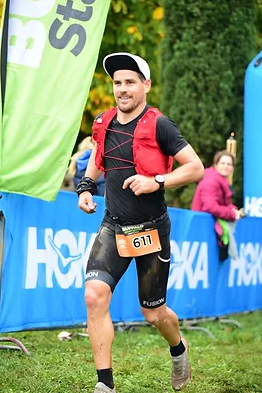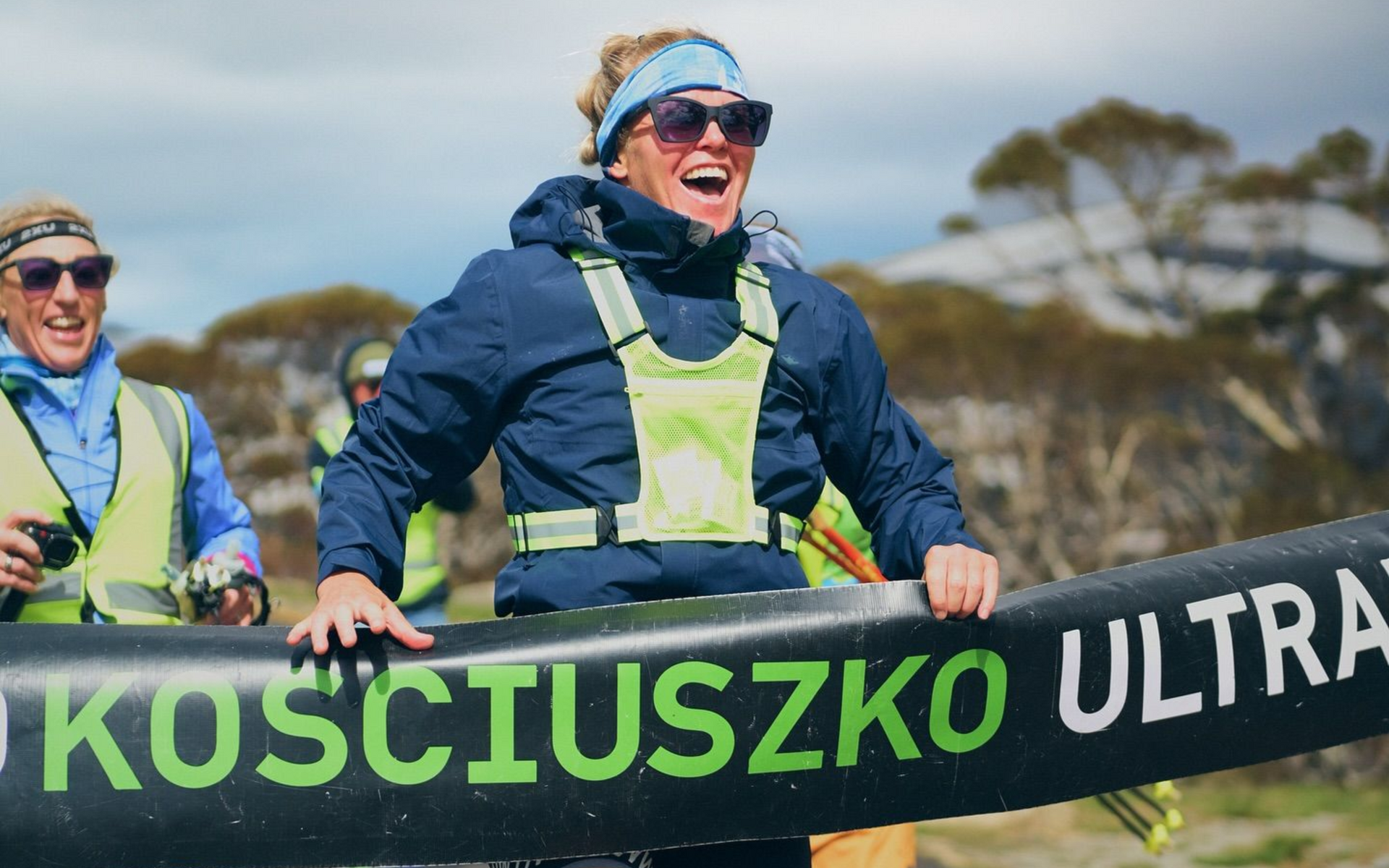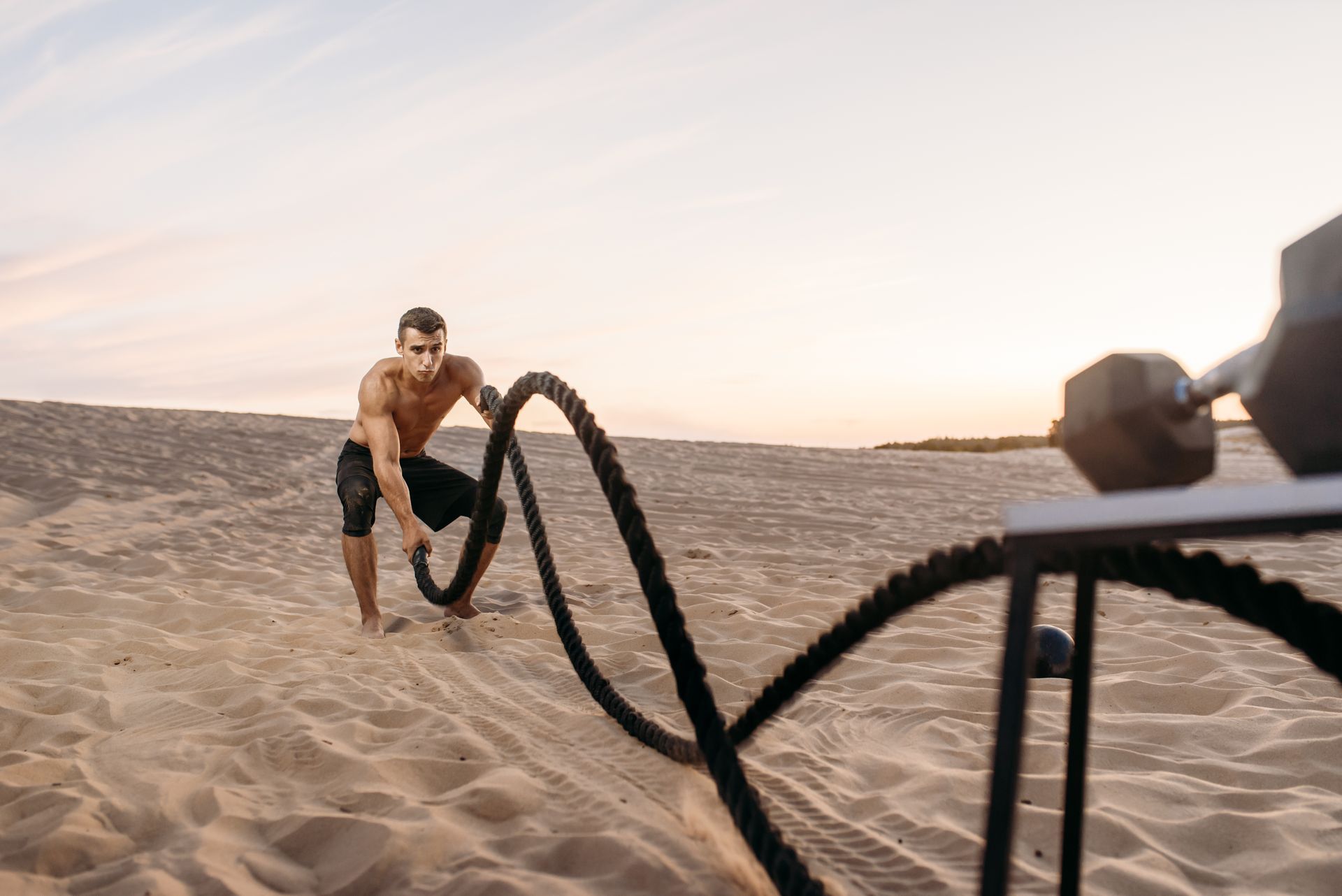
Coach's Corner - Strength Training For Ultra Runners by Benn Coubrough
Benn Coubrough provides you with strength training exercises so you can be at the top of your running game
Ultrarunning is more than just long, slow miles. To go the distance—especially over mountains, technical trails, or back-to-back racing weekends such as backyard Ultras and or 24 hour Track races—runners need more than endurance. That’s where strength training comes in. But not all strength is created equal and there are few factors to include and focus point to include in your strength program. Will split this into two segments. Types of Strength Training and Activation of the muscles and Tendons.
- Building Muscles
- Activation of the muscles specific to your race or event (Technical / Hills / Ascenting and Descending / Long Runnable Sections)
- Timing of when to include them through your phase of training
- How many times a week, and around your Running
- Loading Muscles and Tendons
- Functional and Movement patterns
SECTION 1.
Here’s a breakdown of the key types of strength training ultrarunners should include in their training toolkit—and how to integrate them smartly.
1. Foundational Strength (General Strength Training)
Basic strength work that targets large muscle groups—think squats, lunges, deadlifts, pushups, and planks. This type of training lays the groundwork by building structural balance and muscular endurance. Starting with the bigger muscles groups and activating the smaller muscles, like the hip flexors, calves etc. Stabilising for the core as well.
Why It Matters: It develops durability, improves posture over long hours, and reduces injury risk.
Examples:
- Bodyweight Squat Variations
- Variations of Lunges
- Glute Bridges
- Planks and Side plank holds
- Push ups
- Variations of Calves Raises
Frequency: 1–2 times per week.
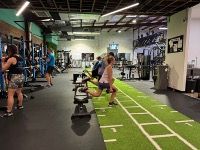
2. Max Strength (Heavy Lifting / Low Reps)
Heavy, low-rep training focused on building raw force—think barbell squats and weighted step-ups.
Why It Matters: Improves running economy and creates more resilient muscles.
Note: Best done with proper form and under supervision.
Examples:
- Squats
- Static Lunges
- Deadlifts
- Hip Thrusters / Bridges
- Step Ups
Frequency: 1–2x/week in off-season or specific blocks. Best to avoid these the night before a key run session, might be better planned after a key workout or a long run, but making sure your recovered enough before lifting too heavy.
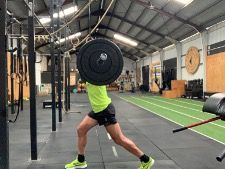
3. Power & Plyometrics
Explosive movements like jump squats, bounding, and box jumps that train fast force production.
Why It Matters: Boosts stride efficiency, climbing power, and tendon elasticity.
Examples:
- Box Jumps
- Skater bounds
- Hill Sprints
- Single Leg Hops
- Bounding exercises
- Split Squat Jumps
Frequency: 1x/week.
Using these as part of drills, if you not use to this tyles of training, build up to it and be mindful around high intensity workouts
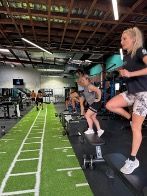
4. Stability & Core Training
Targets trunk, hips, and ankle stability. Vital for technical trails and preventing late-stage breakdown.
Examples:
- Single Leg Deadlifts
- Pistol Squats
- Pallof Press
- Split Squats
- Plank slider exercises
- Dead Bugs
Frequency: 2–3x/week in short sessions. Great as part of a recovery day
5. Functional Movement & Mobility
Dynamic patterns that mimic running mechanics and maintain joint health.
Why It Matters: Makes strength applicable to trail movement and reduces tightness.
Examples:
- Lateral band walks
- World’s greatest stretch
- Kettle bell farmer carries
- Banded Glute and Abductor activation
- Different types of Bridges / straight leg and or single leggered
Frequency: Use in warm-ups/cooldowns. Some of these would be good as bard or routine before running to switch on your glutes / hamstrings etc
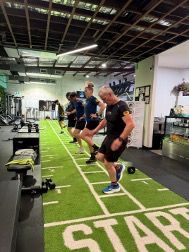
How To Structure It
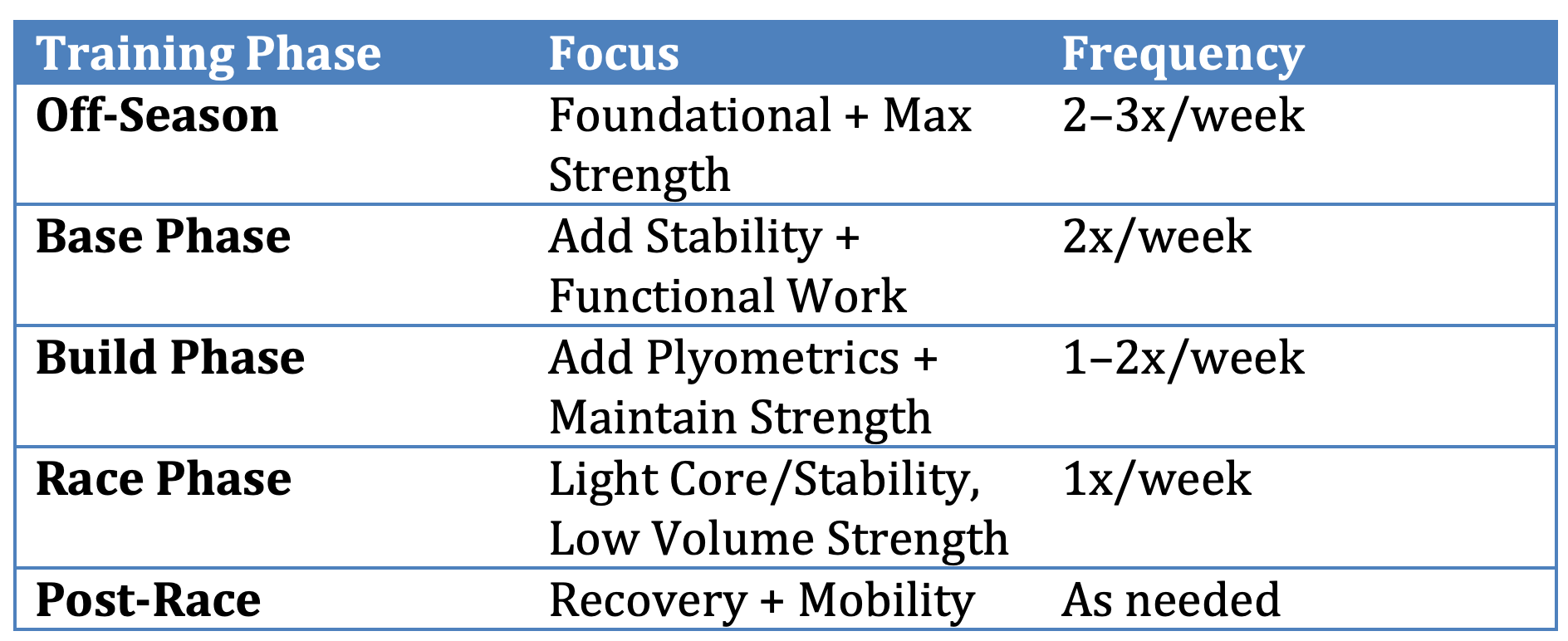
Strength training for ultrarunners isn’t about building beach muscles—it’s about creating a body that can handle the pounding, stay efficient over hours (and days), and recover faster. Whether you’re aiming for your first 50K or eyeing a 240-mile beast like Moab, strength work is a non-negotiable part of the journey.
SECTION 2.
Different ways to activate the Muscles and Tendon-Specific Strength Exercises for Runners.
With Strength training for runners you can activate and build strength by targeting the muscles and tendons that power your stride, absorb impact, and protect you from injury, especially overuse injuries. By focusing on specific activation and tendon-loading exercises, to build a more resilient, efficient, and powerful running machine.
Here’s a breakdown of muscle and tendon-specific strength exercises every runner should include.
1. Glutes & Hip Stabilisers
Strong glutes power your stride and keep your hips aligned—essential for efficient and injury-free running.
Key Exercises:
- Glute bridges (with single-leg progression)
- Banded lateral walks
- Step-ups (weighted or bodyweight)
- Bulgarian split squats
- Clamshells with resistance band
2. Hamstrings & Posterior Chain
Your hamstrings absorb force during footstrike and support powerful push-offs.
Key Exercises:
- Nordic curls (eccentric hamstring work)
- Romanian deadlifts (RDLs)
- Single-leg deadlifts
- Swiss ball hamstring curls
3. Quads & Knee Stabilisers
The quads control knee flexion and absorb impact, especially during descents.
Key Exercises:
- Wall sits
- Step-downs (controlled eccentric loading)
- Split squats
- Spanish squats (great for patellar tendon loading)
4. Calves & Achilles Tendon
Your calves handle a huge amount of impact with every step and store/release energy via the Achilles tendon.
Key Exercises:
- Eccentric heel drops (Achilles tendon rehab & strength)
- Hopping drills (for tendon reactivity)
- Straight-leg calf raises (targets gastrocnemius)
- Bent-knee calf raises (targets soleus)
5. Core & Trunk Stability
A strong core supports posture, stabilizes your stride, and connects upper and lower body movement.
Key Exercises:
- Dead bugs
- Side planks (with leg lift progression)
- Bird dogs
- Pallof press (anti-rotation stability)
- Hanging leg raises
6. Tendon-Specific Loading Techniques
Tendons respond best to slow, heavy loading and explosive/reactive movements. This keeps them strong, springy, and injury-resistant.
Incorporate:
- Eccentric reps (slow lengthening, e.g. Nordic curls, heel drops)
- Isometrics (long holds like Spanish squats or wall sits)
- Plyometrics (low-volume bounding, skipping, hopping)
- Tempo lifts (3–4 second lowering phase)
The best strength plan for runners focuses on movement quality and tendon health—not just load. By incorporating these targeted exercises into your weekly training, you’ll build a more efficient, injury-resistant, and powerful running body. Start small, stay consistent, and evolve your strength as your miles grow.
Train smart. Stay strong. And happy trails.
BENN COUBROUGH HAS CERTIFICATES I & II IN COACHING + LEVEL 3 PERFORMANCE TRIATHLON AUSTRALIA, CERT III & IV PERSONAL TRAINER FITNESS AUSTRALIA. OPERATING AT STROKE NO LIMITS COACHING, COACHING ENDURANCE ATHLETES.
IF YOU WOULD LIKE MORE INFORMATION ON BEING TRAINED BY BENN, CLICK THROUGH HERE TO OUR AURA ENDORSED COACHES PAGE.
